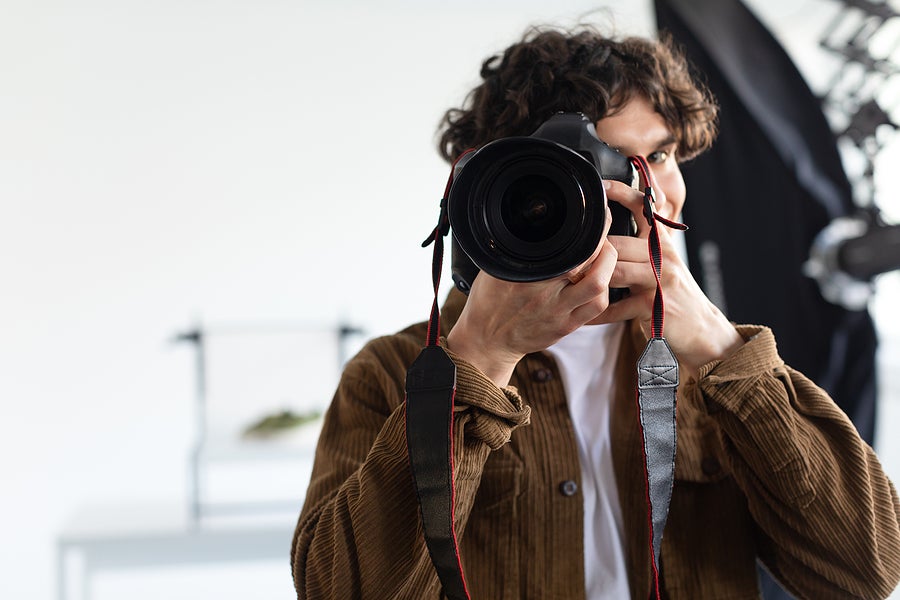
A visually appealing and engaging website is crucial for attracting and maintaining visitor attention. However, incorporating photos effectively requires more than just randomly adding eye-catching images. You’ll need to use our best practices to get the most out of your photos.
 Image Source: Unsplash
Image Source: Unsplash
This article explores 12 tips, covering aspects like image quality, compliance, accessibility, and style consistency that will make your site stand out while effectively communicating your ideas.
How to Properly Use Photos on Your Website
-
Always Opt for High-Quality Images
When selecting photos, refrain from using low-quality or pixelated images. A sharp and clear photo will elevate your website’s aesthetics and make a more positive impact on your audience. To get this level of quality, purchase high-definition stock images or hire a professional.
-
Be Mindful of Copyright
Before adding any image to your site, check for copyright restrictions to avoid legal issues. You can find royalty-free images from various sources like Pixabay and Unsplash. If you opt to use copyrighted material, always get permission and give appropriate credit to the original owner.
-
Optimize Image Size
Large image files slow down your website’s loading time, affecting user experience and search engine rankings. For these reasons, you should optimize the size of your photos. But to make sure you don’t compromise on quality, start with a large, high-quality image in the JPEG format.
-
Utilize Alt Text and Captions
Including alt text and captions enhances the accessibility of your website while benefiting search engine optimization (SEO), a very important aspect of online marketing. The alt text should describe the contents of an image for visually impaired users and search engine bots alike.
-
Carefully Select Background Images
Make sure your photos don’t have backgrounds that clash with the rest of your website design elements. Too many colors may distract visitors from focusing on essential info. Use Picsart as your personal photo background removal solution if you want a backgroundless image.
-
Choose Relevant Photos
Pick images that complement the content on your site effectively. For example, if you have a blog on home decor, choose photos showcasing interior design elements or furniture pieces. Not only will this keep readers more engaged, but it’ll also help with photo-based SEO.
-
Implement Responsive Images
92.3% of internet users access the internet via their mobile phone, making it incredibly important that your images are responsive and adjustable. If your images are static, it could completely mess up your site’s formatting. Poor mobile optimization can also tank your SEO rankings.
-
Combine Text with Images Strategically
Integrate text within photographs to provide context or highlight crucial information. However, be cautious about the placement and size, as they shouldn’t overpower the image or become too difficult to read on smaller screens. Don’t include fonts that are hard to read on any device.
-
Establish Consistency in Style
One mistake people make when building a website is not paying attention to consistency. They’ll often use a website builder or template that doesn’t work with the rest of their visual style. To avoid this, use filters and stick to a specific color scheme when you’re selecting your images.
-
Balance Original and Stock Photos
While stock photos are convenient and readily available, they lack the uniqueness of original images. Striking a balance between both can give your site an authentic touch. And if you know how to edit, you can manipulate certain licensed photos so they fit in with your branding.
-
Use Images with Purpose
Resist the temptation to add photos randomly or just because they look cool. Instead, ensure that every image has a purpose, whether it’s supporting textual content or communicating essential ideas. Once again, relevant photos contribute to improved SEO rankings.
-
Update Photo Gallery Regularly
Keep your images fresh by regularly updating your gallery. This change maintains visitor engagement while showcasing new content and promotion. You should also update images that look out of date. For example, change images that show old photos or fashion styles.
In Conclusion
With these 12 valuable tips, it’s time to elevate your website by incorporating photos effectively and strategically. By adhering to these best practices, you’ll create a visually engaging experience for your visitors while enhancing accessibility and boosting your SEO rankings.
1793 Views












